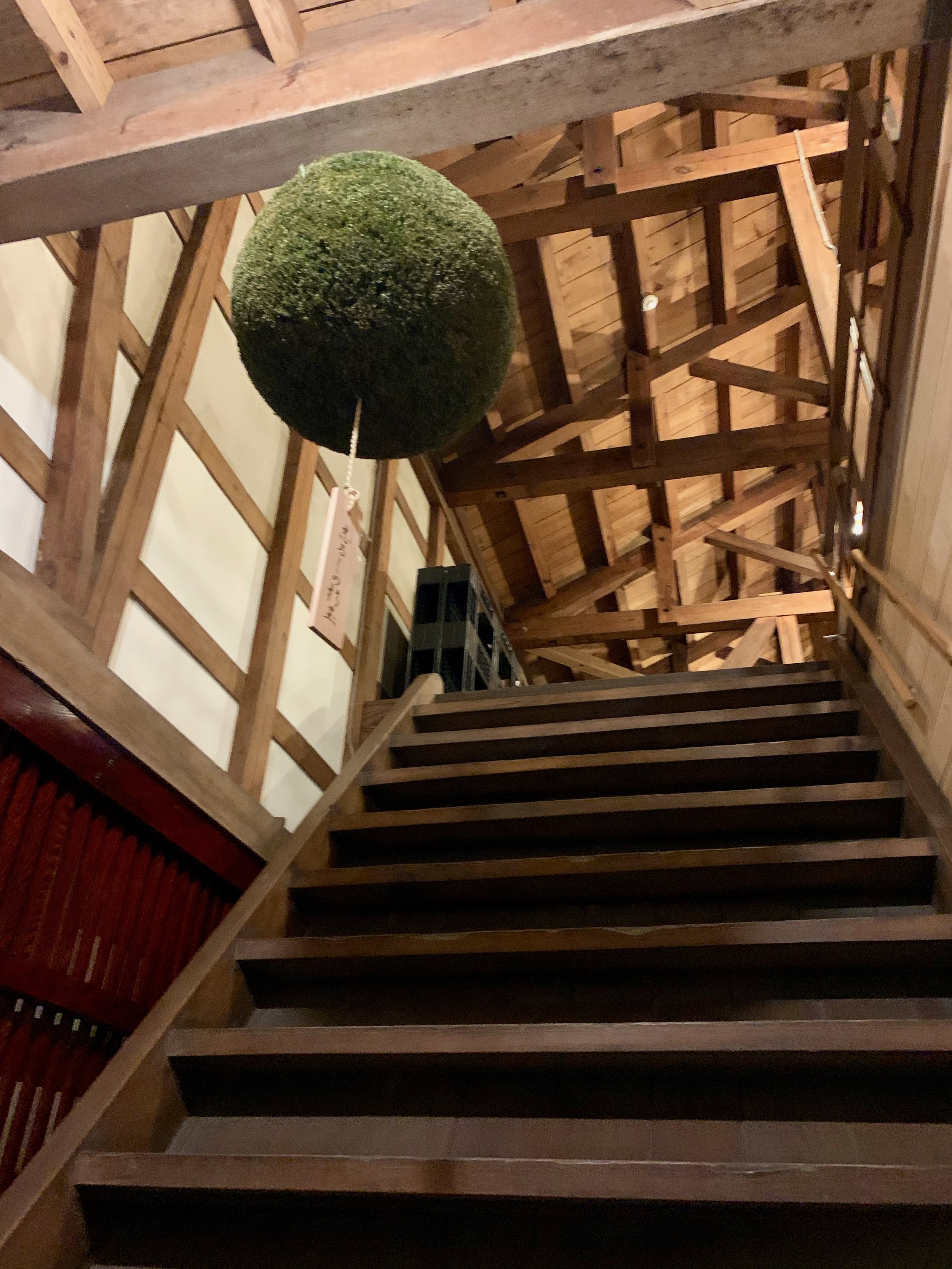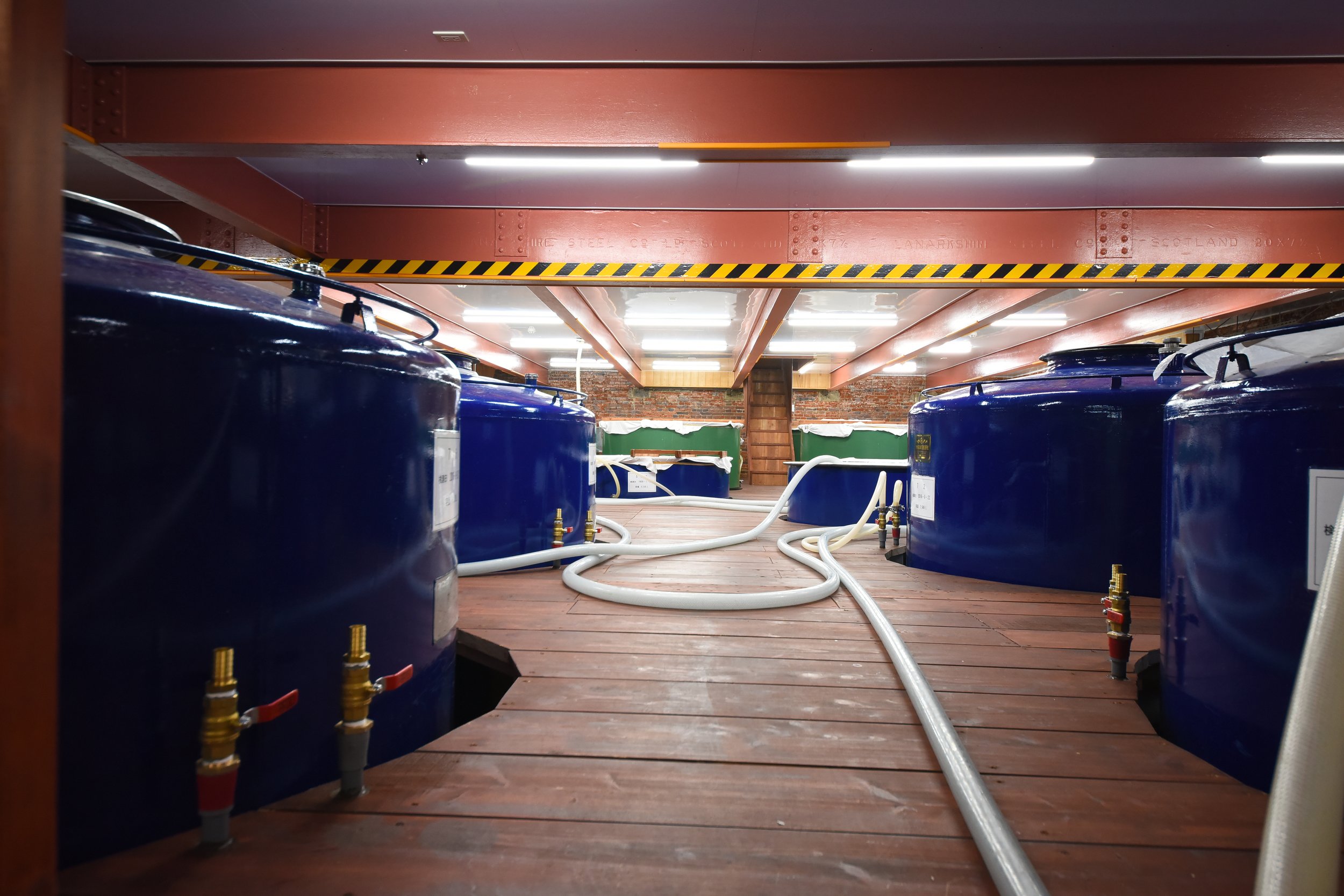Hachinohe Shuzo: The Winningest Sake Brewery of 2021
The traditional main house of Hachinohe Shuzo, constructed of zelkova wood. (Photo courtesy of Hachinohe Shuzo.)
If you’re new to sake and wondering what to buy, checking out sake competition results is one way to see what the experts like. But what if you prefer not to spend your time drilling down into the various competition results and just want to know which breweries top the lists? If you’re that person I suggest checking out the World Sakagura Ranking. For three years now, a Tokyo drinks consultant named Toshiaki Yamada has done the work of aggregating the results of the world’s top sake competitions and extrapolating the top fifty ranked sakes in his World Sakagura Ranking.
Keep in mind the caveats that these are only the rankings of those sake breweries that play the game of entering competitions. Among the 1,200 to 1,500 breweries in Japan there are countless makers who for whatever reason don’t bother with the process. You can stumble upon gems of sakes that no international judge has ever heard of. And like any competition, these results reflect the trends and obsessions of judges at this moment in history; perhaps your tastes are different from the prevailing norms.
Hachinohe master brewer Nobuyuki Komai, center, at the World Sakagura Ranking 2021 award ceremony. (Photo courtesy of Hachinohe Shuzo.)
But those producers that do enter competition include most of the craft brands that export abroad and hope to find a spot on the shelves your local sake specialty shop or liquor store. This year, Aomori Prefecture’s Hachinohe Shuzo, makers of the Mutsu Otokoyama and Mutsu Hassen brands, came out on top, followed by Heiwa Shuzo in Wakayama Prefecture (makers of Kid sake) and Watanabe Shuzo in Gifu Prefecture, which produces the Hourai line of sakes.
Michael and I visited Hachinohe for our sake book research, making a quick stop in Aomori as we traveled from Tokyo to Hokkaido. Despite being the northeastern-most prefecture on mainland Honshu island, if you take the Shinkansen from Tokyo Station and transfer at Hachinohe City to a local JR line you can get to the brewery in less than four hours. Hachinohe feels like the provincial fishing and industrial town it is, dominated by fishing boats that cruise the southern Hokkaido fishing grounds, and shipping and industrial concerns.
Waterfront view of the brewery. (Photo courtesy of Hachinohe Shuzo.)
At Hachinohe Station, we saw a vendor drying squid-- high quality squid and mackerel are especially abundant in Aomori—and then shredding it by machine. One of my favorite memories of that day is walking from the small Mutsu Minato Station train station to the brewery. It was a very cold and windy day in January, but the walk gave us a glimpse into small-town, coastal Japan, a part of the country that seemed frozen in time. At a little before 10 am, the tiny fish markets that line the road from the station to the nearby brewery were already closing up for the day. At one fish shop, the only sign of product was a hanging racks of drying bonito swaying in the wind.
The brewery was founded in 1775, and today consists of a compound of six handsome buildings dating from the Taisho period (1912-26). They’ve been designated registered tangible cultural properties for their craftsmanship and interesting combination of eastern and western design elements. Tataki (三和土) hard-packed dirt or clay floors and a mud-walled warehouses co-exist with brick buildings reinforced with steel beams manufactured in Scotland. The main house--which includes the brewery’s office space and a shop selling everything from Hachinohe’s latest sake pressings to sake bath bombs—is a beautiful traditional machiya-style structure
We wanted to include the Hachinohe Shuzo in our book because we love its inventive, delicious sake, and because of brothers Hideyuki and Naoyuki Komai’s interest in using all-local organic and natural rice, Aomori yeast, and their efforts to restore and preserve the local Kanisawa ecosystem. The brewery’s Mutsu Otokoyama line, beloved in the prefecture’s fishing community, is still going strong, but they’ve also developed their highly successful ginjo-type line, Mutsu Hassen, which dominate their exports. Both lines have brought home awards.
In the wake of the brewery’s stellar World Sakagura Ranking performance, I’m bringing you this Q&A with Hideyuki and Nobuyuki Komai, who are, respectively, senior executive director and master brewer of Hachinohe Shuzo.
Photo courtesy of Hachinohe Shuzo.
NM: First, congratulations on coming in first in the World Sakagura Ranking! Do you think this ranking is more meaningful inside Japan, or to foreign buyers?
HK: We send tons of items to the competitions because it’s helpful for us to know how Mutsu Hassen is evaluated both domestically and overseas. As a result we’ve won many prizes. It’s given us the confidence to sell our products with a strong sense of pride. Such rankings are most meaningful as a tool to generate interest in products in the sake industry.
Hachinohe Senior Executive Director Hideyuki Komai, left, with Xavier Thuizat, founder of the French Kura Master competition. (Photo courtesy of Hachinohe Shuzo.)
NM: When did you begin to adopt the organic and all-local identity for your brewery? What drove that decision?
HK: In 2002 we began using local rice and yeast. Wineries emphasize “terroir” to create the individuality, so we thought, why not use local ingredients for brewing jizake (地酒, local sake) as well?
NM: The concept of “terroir” in sake is contentious for many reasons related to differences in the way wine and sake are made. How would you describe the expression of the local terroir in your sake, especially in relation to the rice you use?
NK: In my opinion, wine and sake, as fermented beverages and agricultural products, are in the same category, just with different ingredients. But to be honest, the difference in the taste of different rice varieties like Hanaomoi, Hanafubuki, Mashigura, etc. are harder to distinguish [in sake] than with wine grape varieties in wine. But terroir also includes our mineral-rich Kanisawa water. Its high fermentation power makes it easy to care for the moromi mash. Along with the white koji we use in the moromi, these elements give our sake a great aftertaste, crisp with well-balanced acidity.
NM: You are invested in the idea of satoyama (里山, the original, undeveloped land near a populated area), and through the Ganja Natural Sake Club, are trying to preserve the Kanisawa water source area and its natural rice fields. Can you describe what you are doing to achieve this goal?
NK. Good question! Most people don’t know how hard growing rice is, so we’ve started this club activity. It allows our members to learn how rice is grown, harvested and processed, and fosters a sense of gratitude toward the farmers as well. Knowing how to work the land is necessary for us to be able to live in this world so we hope that more and more people become interested in this activity and join.
On display: Hachinohe Shuzo account books and ledgers from pre-computer days.
NM: Can you describe how sourcing your rice from local Aomori farmers has affected agriculture in your region?
NK: The price of rice fluctuates year to year and so farmers fear drops in prices, especially during extraordinary situations like the Covid-19 pandemic. To prevent those fluctuations from affecting them, we contract directly with several farmers. This allows them to keep a steady amount of rice production and stabilizes their incomes. More than ninety percent of our rice comes from these contract farmers, other sake breweries may use some contract farming, but usually not to this degree.
NM: Can you describe where the term “ganja” in “Ganja Natural Sake Club” comes from?
HK: The word of “ganja” is Nambu dialect (spoken in the Hachinohe district) for “Kanisawa.” It’s not the bad word you might be thinking of (!), so we specify “Ganja Natural Sake Club.”
Fermentation tanks. (Photo courtesy of Hachinohe Shuzo.)
NM: When did you decide to start brewing your sake with white koji? Did you do this in order to eliminate the need for artificial lactic acid?
NK: We started using white koji in 2015. Our philosophy is “don’t add anything that isn’t necessary,” and we felt that artificial lactic acid was not necessary. There are more advantages than disadvantages to this method, for example the cost reduction of not having to buy lactic acid, and simplifying the brewing process. (White koji also results in a high level of citric acid that gives sake a clean, sharp and very food friendly character.)
NM: Why did you decide to combine the old provincial name of “Mutsu” with the Chinese myth of the eight legendary immortals who liked to drink (hassen, 八仙) to create your new Mutsu Hassen label?
HK: Because “Mutsu Otokoyama” was our first brand and our 8th-generation brewery owner Shozaburo Komai liked the play on words of hassen (it can also be written out as “八千,” meaning 8,000). He wanted the linked brand names “Mutsu Otokoyama” and “Mutsu Hassen.”
NM: Speaking of wordplay, “Mutsu Hassenblage” is a good example. It’s a sake made by brewing four local rice varieties separately and then blending them. It’s available in Hong Kong, but will you be exporting it to North America any time soon? What are the four local rice varieties that you use, and how hard was it to master blending these?
NK: If might be coming to North America if there’s enough demand! The idea for Hassenblage came from our CEO Shozaburo Komai, who challenged us to come up with our form of an assemblage wine. We were the first to produce sake in this way. The four types of local rice varieties are the table rice varieties Mashigura and Reimei, and sake rice varieties Gin’eboshi and Hanaomoi. Their tastes are totally different. We ladle up these four types of sake from their tanks, and I mix them, little by little, tasting over time and finally determining the taste of Hassenblage. After that I blend them according to the recipe that I came up with.
NM: I am happy to see your old-school Otokoyama brand still in production and winning awards, too. Which of the two different Otokoyama varieties now sells best?
Vingtage Mutsu Otokoyama vending machine on display in the brewery.
HK. We have Mutsu Otokoyama Chokara junmai and Mutsu Otokoyama classic (futsu-shu, or regular sake). We produce and sell more of the “Chokara junmai” than the “Classic.”
NM: You are always experimenting with new types of sake: sparkling, kijoshu (貴醸酒, which replaces some of the water used to ferment sake with finished sake), even sake lees shochu. What project are you most excited about introducing to the public in the coming year?
We got to try these, and they are delicious; lobby your local importer for them!
NK. “Aomori Apple Ale” and “rice ale” are among our interesting productions for 2022. These sakes are made with beer yeast and hops that are added to our sake and fermented in the bottle in the secondary Champagne method. They taste like a sparkling IPA, so you can enjoy the feeling of drinking a beer-like sake. We do not have a plan right now to export to North America because it’s taxed as a liqueur, not a sake, and the price is not cheap. We hope to export to North America when the customer demand is there!
If you liked this post and would like to receive links to my new sake posts in your email inbox, click on the pink box above or below this post and subscribe!













